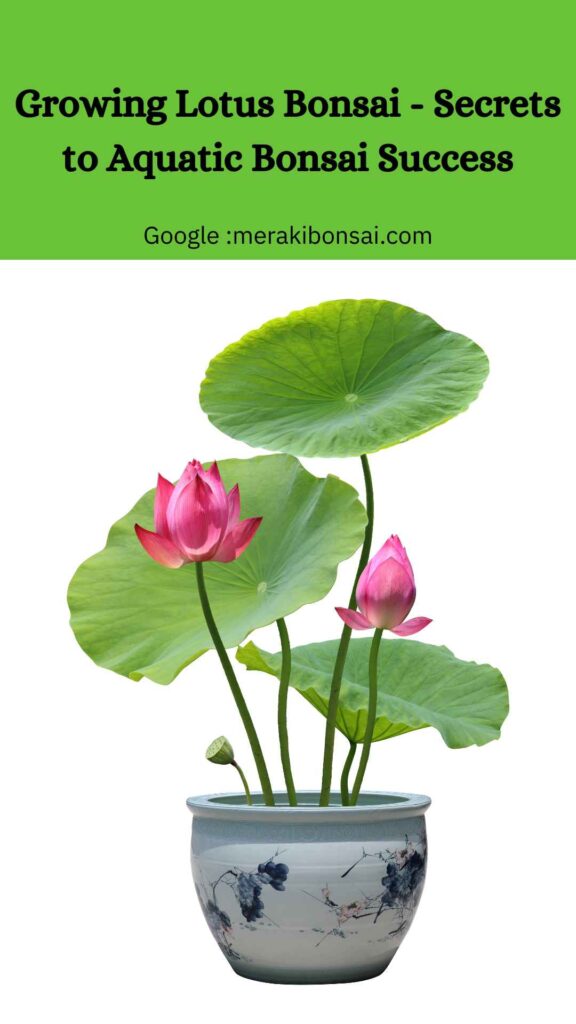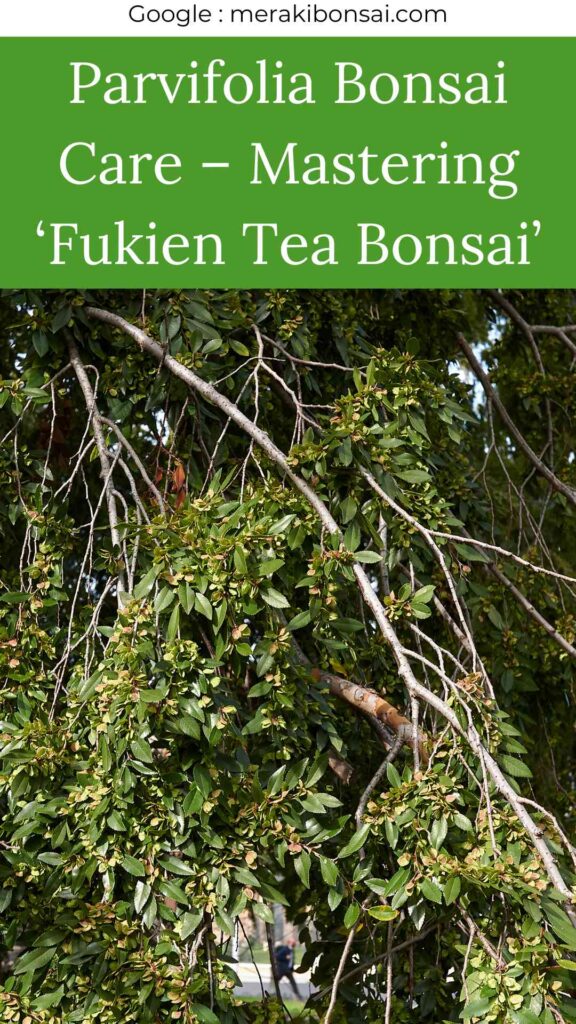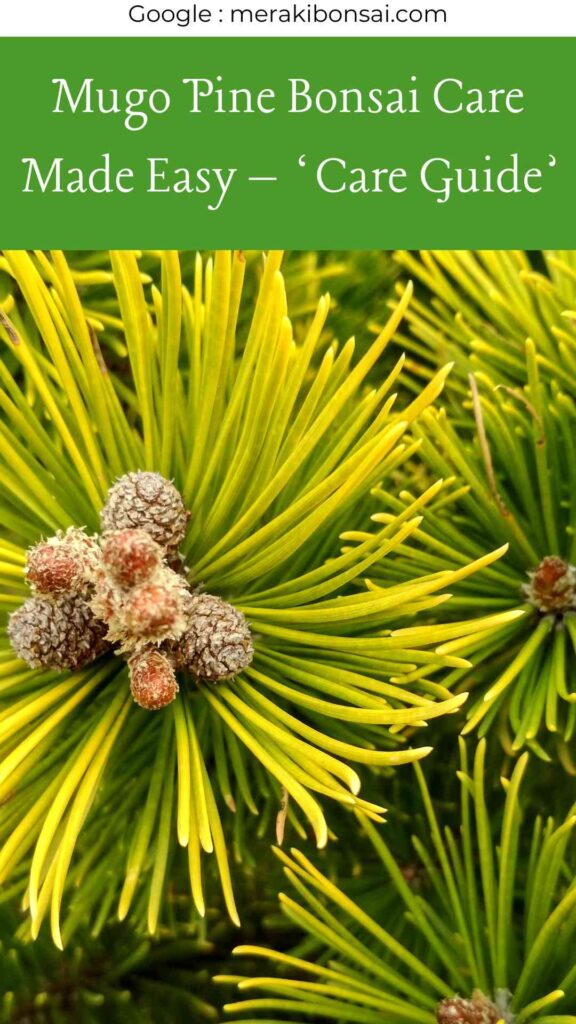
Hey there, bonsai enthusiasts! It’s Raima here, your friendly neighborhood bonsai expert.
I’ve been tending to these miniature marvels for over a decade, and let me tell you, it’s been a journey filled with growth, both for my trees and myself.
Today, I want to dive into a unique and captivating branch of bonsai: the art of growing lotus bonsai.
Now, you might be thinking, “Raima, I thought bonsai were all about tiny trees!” Well, my friends, the bonsai world is full of surprises.
Lotus bonsai takes our beloved art form and adds a splash of aquatic magic. It’s like having a miniature pond right in your living room!
So, grab your gardening gloves, and let’s embark on this aquatic adventure together.
Understanding Lotus Bonsai
First things first, what exactly is a lotus bonsai? It’s the art of growing a lotus plant, scientifically known as Nelumbo nucifera, in a bonsai-style container.
The lotus is an aquatic plant famous for its stunning flowers and symbolic significance in many cultures. In bonsai form, we focus on creating a miniature representation of a lotus pond.
Unlike traditional bonsai trees, lotus bonsai doesn’t involve pruning branches or shaping trunks.
Instead, our focus is on the delicate balance of water, soil, and the graceful growth of lotus leaves and flowers.
It’s a unique challenge that brings a sense of tranquility and a touch of the exotic to your bonsai collection.
Getting Started with Lotus Bonsai
To start your lotus bonsai journey, you’ll need a few key items. First on the list is a suitable container. Forget the typical bonsai pots; we’re going aquatic!
I recommend this Ceramic Bonsai Planter Pot. It’s perfect for holding water and has a lovely, serene design that complements the lotus.
Next, you’ll need a lotus tuber or rhizome. These are the root-like structures from which the lotus grows.
You can find these at local nurseries specializing in aquatic plants or order them online. Choose a healthy tuber with visible growth points.
Setting Up Your Lotus Bonsai
Preparing the Container: Fill your Ceramic Bonsai Planter Pot with a mix of heavy clay soil and a bit of organic matter. Lotus plants prefer heavy, nutrient-rich soil. Avoid potting soil, as it’s too light and may float away.
Planting the Lotus: Gently place the lotus tuber horizontally in the soil, making sure the growing tips point upwards. Cover it with about an inch of soil.
Adding Water: Here’s where it gets fun! Slowly add water to your pot until it’s about 2-3 inches deep. Lotus plants love water, but don’t drown them. Use a Watering Can for gentle, controlled watering.
Finding the Right Spot: Place your lotus bonsai in a sunny spot. These water lovers need at least 5-6 hours of direct sunlight daily. If you’re growing indoors, consider using Bonsai Indoor Lights to ensure your lotus gets enough light.
Mastering Elephant Bush Bonsai Care: A Beginner’s Guide
Caring for Your Lotus Bonsai
Water Management: Keep the water level consistent. As the weather warms up, you might need to top up daily. Use your Watering Can to maintain the right water level without disturbing the soil.
Fertilizing: Lotus plants are heavy feeders. I use this Fertilizer designed for aquatic plants. Follow the instructions carefully; over-fertilizing can harm your lotus.
Pruning and Maintenance: Use Bonsai Pruning Tools to remove any yellowing or damaged leaves at the water line. This keeps your bonsai looking tidy and prevents rot. For more delicate work, like trimming flower stems, I use these Bonsai Pruning Scissors.
Pest Control: Even aquatic bonsai can face pest issues. If you spot any unwanted visitors, use this Organic Insecticide. It’s effective yet gentle on your lotus and the environment.
Monitoring Soil Moisture: While your lotus lives in water, the soil moisture is still crucial. Use a Soil Moisture Meter to ensure the soil stays consistently moist but not waterlogged.
Mango Bonsai Magic: Nurturing Miniature Fruit Trees
Shaping Your Lotus Bonsai
In traditional bonsai, we use wiring to shape branches. With lotus bonsai, our approach is a bit different. We focus on guiding the growth of leaves and flowers for an appealing composition.
- Leaf Management: Allow the first few leaves to grow normally. As more appear, gently guide them with Anodized Aluminum Wire. This soft wire won’t damage the delicate stems. Aim for a balanced, natural look.
- Flower Arrangement: When flower buds appear, use Annealed Copper Wire to gently position them. The goal is to create a scene reminiscent of a tranquil lotus pond.
The Magic of Lotus Flowers
Now, let’s talk about the star of the show: the lotus flowers. These blooms are nothing short of miraculous. They emerge from the water, pure and untouched, symbolizing spiritual awakening in many cultures.
Lotus flowers can be white, pink, or a deep, vibrant red. They open in the morning and close at night, a daily dance that never fails to captivate.
The first time you see a lotus flower emerge from your bonsai, trust me, it’s a moment you’ll cherish.
Douglas Fir Bonsai: Bringing the Forest to Your Windowsill
Seasonal Care for Lotus Bonsai
Lotus plants are perennials, which means they come back year after year. However, they do require some seasonal care:
Spring: As temperatures rise, your lotus will awaken. Increase water levels and start fertilizing. This is when new growth really takes off.
Summer: Peak growing season! Maintain water levels, fertilize regularly, and enjoy the stunning flowers. Keep an eye out for pests in the warmer weather.
Fall: Growth slows down. Reduce fertilizing and allow your lotus to prepare for dormancy. Don’t panic if leaves start to yellow; it’s natural.
Winter: In colder regions, bring your lotus bonsai indoors. Reduce water levels to just cover the soil. Your lotus will rest until spring returns.
The Zen of Lotus Bonsai
One of the things I love most about lotus bonsai is the sense of peace it brings. There’s something incredibly soothing about watching the interplay of water, leaves, and those exquisite flowers. It’s like having a miniature meditation garden.
In our busy lives, we often forget to pause and appreciate beauty.
Your lotus bonsai is a gentle reminder. It encourages you to slow down, to observe the gradual unfurling of a leaf, the slow rise of a flower bud.
In tending to your aquatic bonsai, you’re not just nurturing a plant; you’re nurturing your own sense of calm.
Community and Learning
As with all bonsai, growing lotus is a journey of continuous learning. I’ve learned so much from my lotus bonsai over the years – patience, the beauty of impermanence (those flowers don’t last forever!), and the resilience of nature.
But I haven’t walked this path alone. The bonsai community is incredibly supportive. We share tips, celebrate each other’s successes, and learn from the inevitable hiccups.
Whether it’s a local bonsai club or online forums, connecting with fellow enthusiasts enriches the experience.
And hey, if you’ve found this guide helpful, consider supporting my work. Every little bit helps me continue sharing my bonsai journey with you all.
You can buy me a coffee (or maybe a lotus tea!) at Ko-fi. Your support means the world and keeps me motivated to dive into topics like our aquatic bonsai adventure today.
Frequently Asked Questions
To wrap up, let’s address some common questions I get about lotus bonsai:
Q: Can I grow lotus bonsai indoors year-round?
A: Yes, with proper lighting. Use Bonsai Indoor Lights to provide the necessary 5-6 hours of bright light daily.
Q: How often should I change the water?
A: Change about 1/4 of the water weekly to keep it fresh. Use your Watering Can to top up evaporation loss daily.
Q: Can I use tap water for my lotus bonsai?
A: Yes, but let it sit out overnight to allow chlorine to dissipate. Rainwater or distilled water are even better.
Q: How do I know if my lotus needs more fertilizer?
A: Yellowing leaves (not due to seasonal changes) or weak growth are signs. Use Fertilizer designed for aquatic plants.
Q: Will my lotus bonsai attract mosquitoes?
A: Standing water can attract mosquitoes. Add a few small fish like guppies to your bonsai pot; they’ll eat mosquito larvae.
Q: How do I propagate my lotus bonsai?
A: Divide the tubers in early spring before new growth starts. Each section with a growing tip can become a new plant.
Q: Can I place my lotus bonsai outdoors in summer?
A: Absolutely! Just ensure it’s in a Bonsai Pot that can withstand outdoor conditions.
Q: How do I prevent algae growth?
A: Some algae are natural in aquatic environments. Regular water changes and avoiding over-fertilizing help control it.
Q: My lotus hasn’t bloomed. What’s wrong?
A: Patience! It can take 2-3 years for a lotus to mature and bloom. Ensure it gets enough light, nutrients, and has sufficient pot depth.
Q: Can I mix other aquatic plants with my lotus bonsai?
A: Yes! Small water lilies or floating plants like duckweed can create a lovely miniature pond ecosystem.
In Conclusion
Growing a lotus bonsai is a unique and rewarding journey. It challenges us to think beyond the traditional bonsai tree, to embrace the fluidity and grace of aquatic life.
From the first tiny leaf breaking the water’s surface to the moment a lotus flower unfurls its petals, every stage is a small miracle.
Remember, your lotus bonsai is more than just a plant. It’s a piece of living art, a miniature oasis, and a daily reminder of the beauty found in patience and care.
So go ahead, dive into the world of lotus bonsai. Create your own little lotus pond, and let its tranquility ripple through your life.
And as always, I’m here cheering you on. Every lotus leaf, every blossom is a triumph. Share your journey with me, ask questions, and don’t forget to enjoy the process.
After all, in bonsai as in life, it’s not just about the destination; it’s about cherishing every step of growth along the way.
Here’s to your aquatic bonsai adventure! May your lotus roots grow strong, your flowers bloom bright, and your bonsai journey be ever joyful.
Happy bonsai-ing!
P.S. If you found this guide helpful and want to support more content like this, consider buying me a coffee at Ko-fi. Your support means everything and helps keep this bonsai blog blooming! Thank you!


